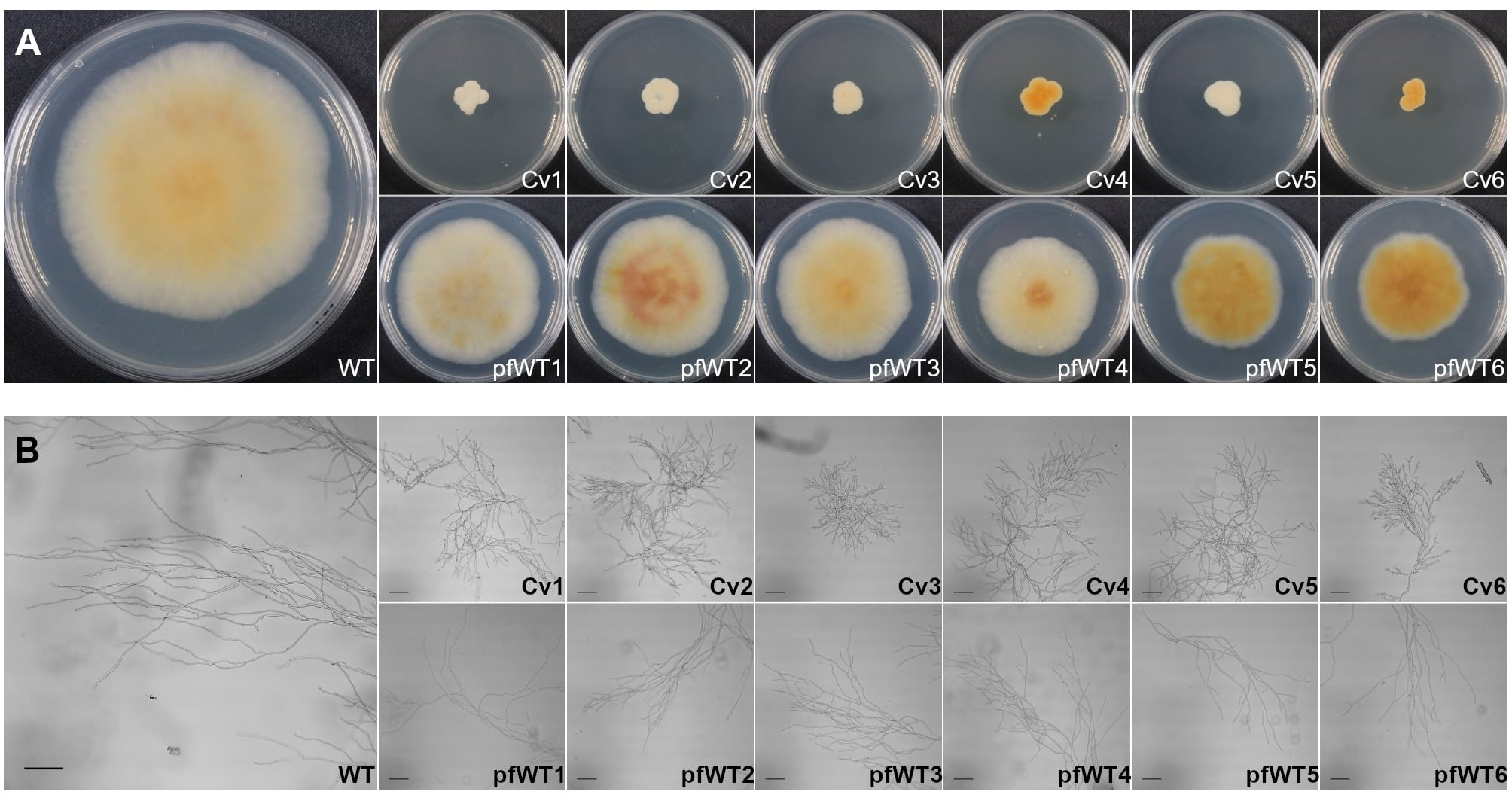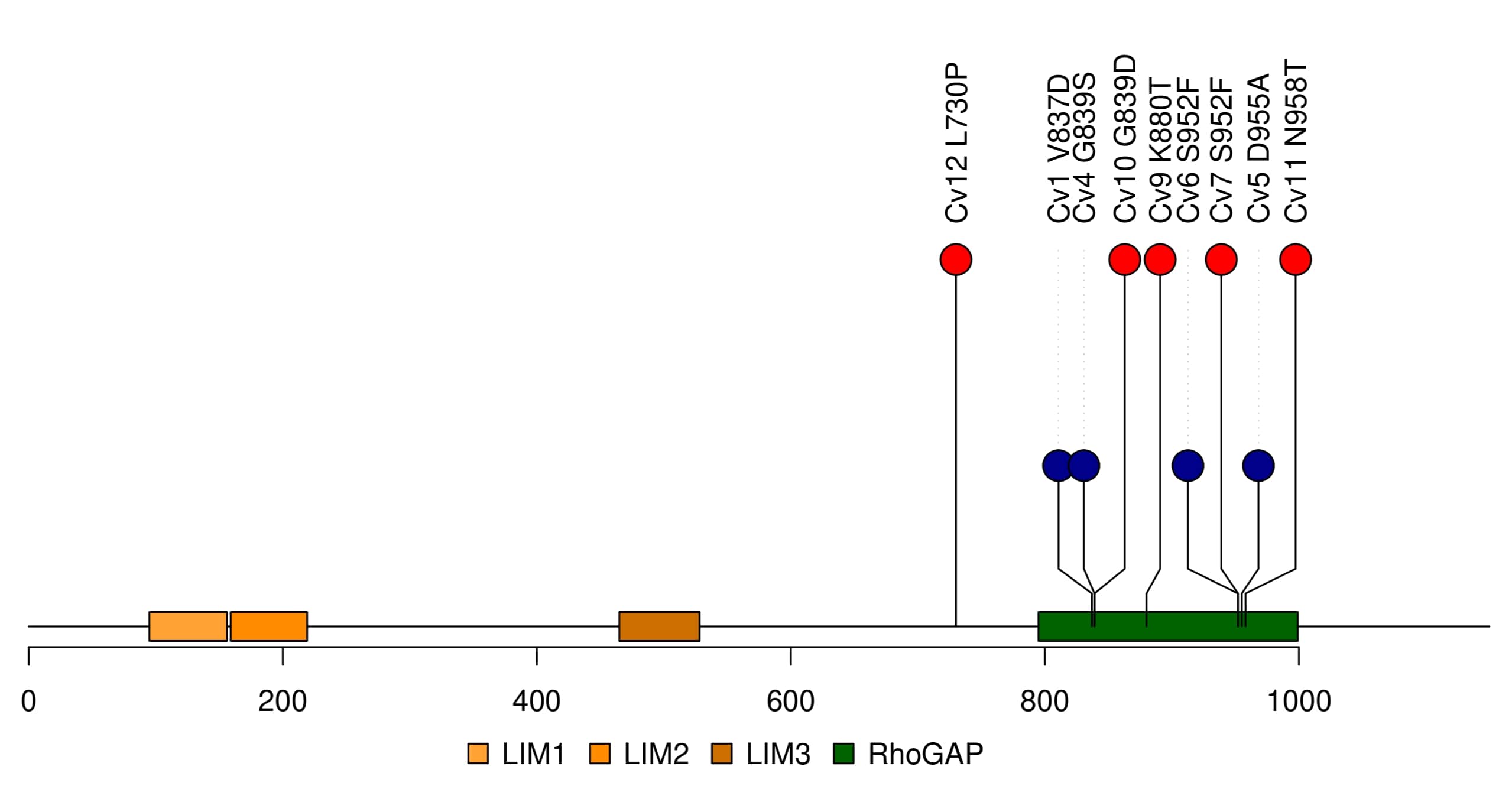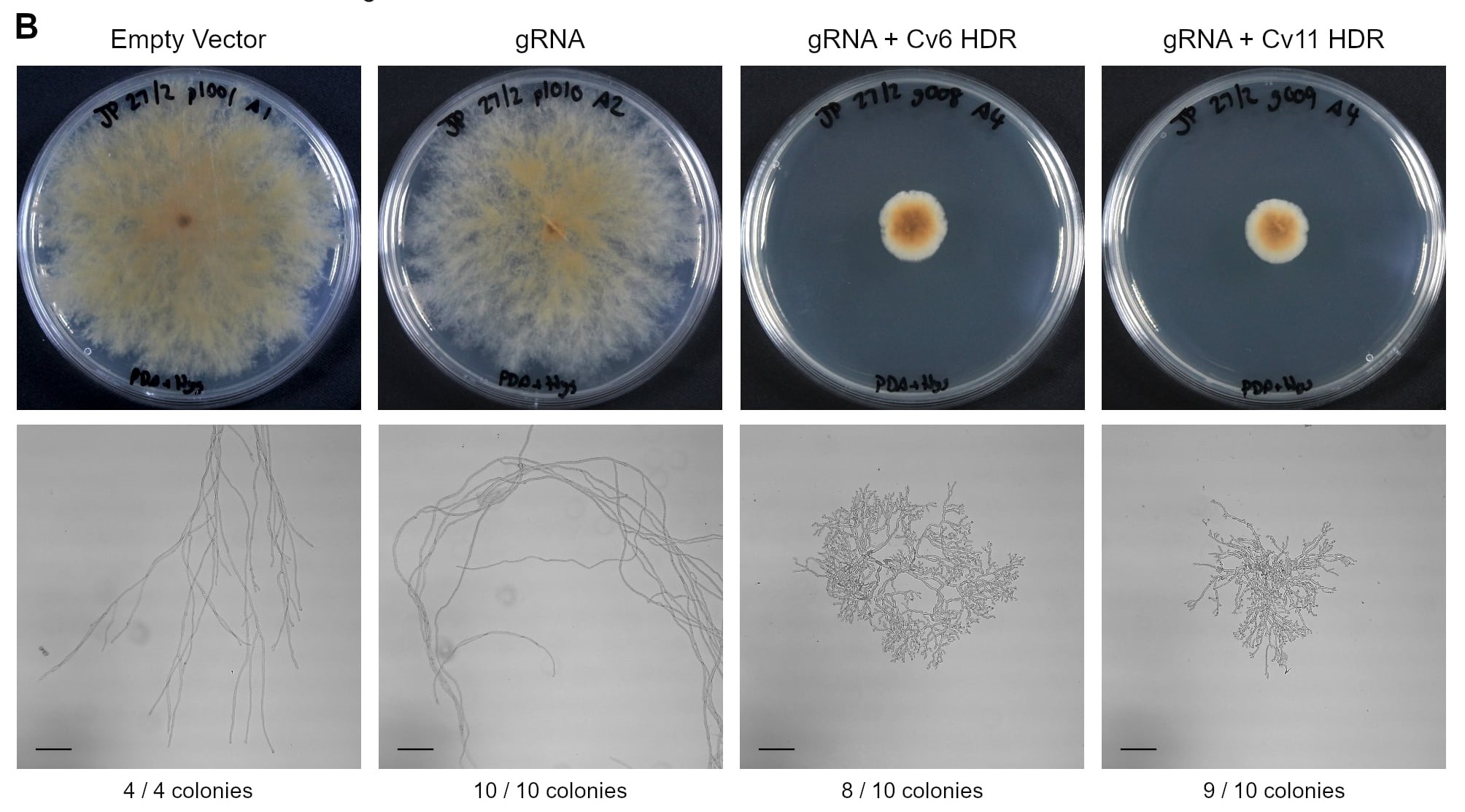Mycoprotein - Molecular Genetics
Collaborative project with Quorn producer, Marlow Foods Ltd.
Quorn mycoprotein is a globally recognised, sustainable meat alternative derived from the filamentous fungus Fusarium venenatum. A major challenge in its large-scale industrial production is the spontaneous and consistent appearance of highly branched mutant strains, known as “colonial variants” or “C-variants”.
This dense, irregular growth pattern negatively affects the texture of the final product and forces the early termination of the fermentation process, limiting efficiency and sustainability. Despite being a long-standing problem for the industry, the precise genetic cause of this undesirable morphology was previously unknown. This project aimed to pinpoint the specific mutation responsible for the C-variant phenotype.

To investigate the genetic basis of this issue, we isolated and cultured the C-variant strains, as well as post-fermentation WT strains, from multiple independent commercial fermentation campaigns. Using whole-genome sequencing, we determined the genetic variation across these isolates and identified mutations in a single gene, jg4843, in 11 out of 12 C-variant samples. These mutations were completely absent in the wild-type strains.
We identified this gene as the F. venenatum ortholog of LRG1, a protein known to regulate fungal growth and branching. The identified mutations were primarily located within the critical RhoGAP functional domain, which is essential for the gene’s activity.

To definitively prove that mutations in this gene were the cause, we used CRISPR/Cas9 to precisely introduce one of the non-synonymous SNPs found in a C-variant into the genome of a wild-type strain. This single nucleotide change was sufficient to completely recreate the characteristic dense, hyper-branching C-variant morphology.
By identifying the mutation of the FvLRG1 gene as the causal event for C-variants in commercial fermentations, this research provides a clear target for developing strategies to prevent their appearance. This work paves the way for enhancing the efficiency, quality, and sustainability of mycoprotein production.
